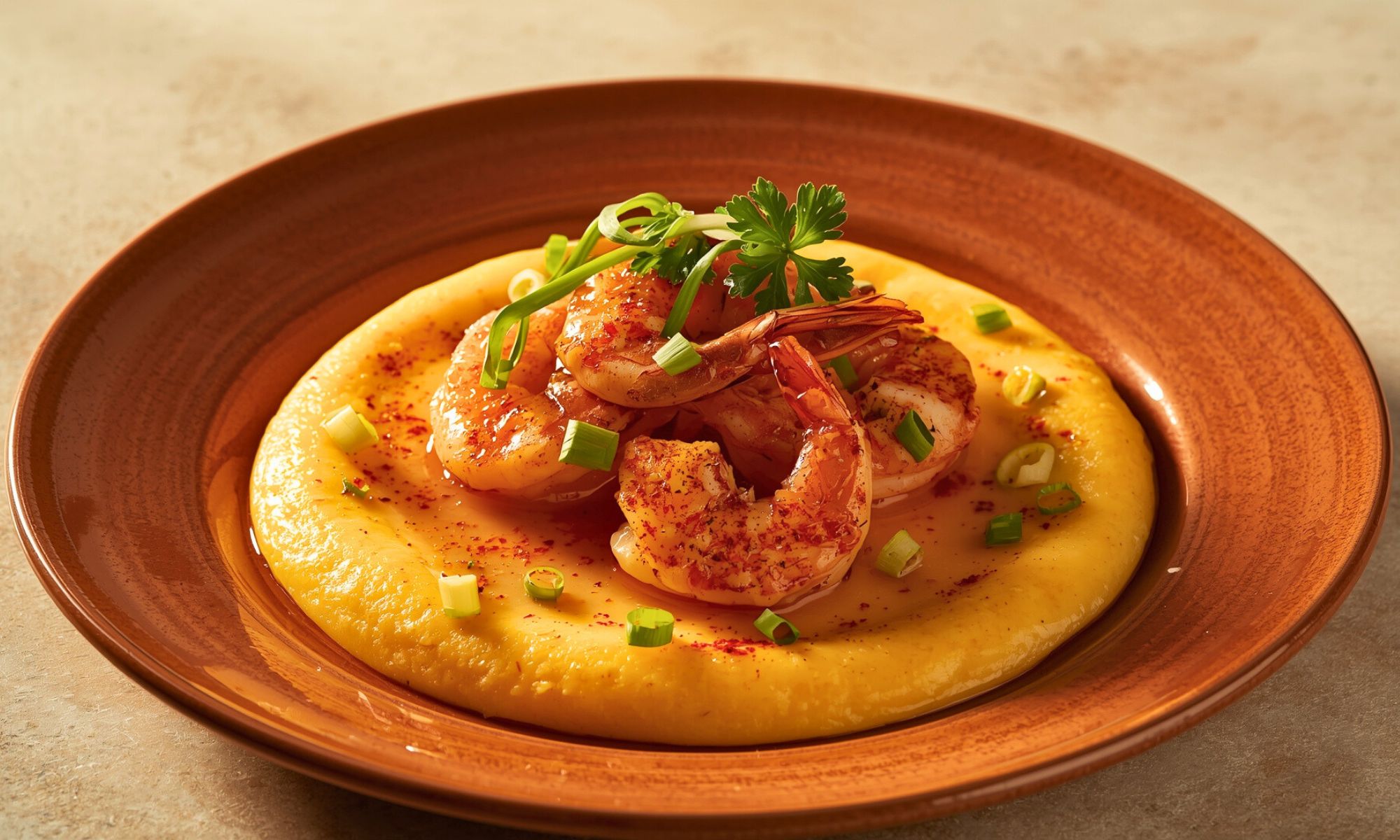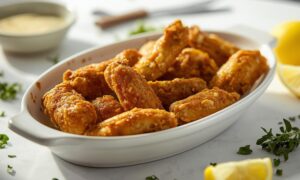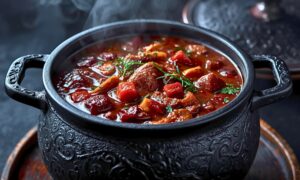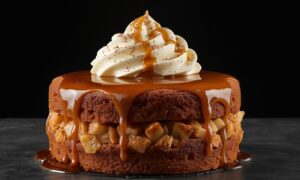The alarm hadn’t even gone off yet, but emails and reminders were already tugging at me. Between school lunches, office deadlines, and endless laundry, dinner often feels like just another checkbox on a never ending list. Still, food is how I keep my family connected, even when time is short.
That’s why I lean on dishes like Cajun Shrimp and Grits, comforting, soulful, and surprisingly doable on a weeknight. The creamy, buttery grits feel like a warm hug after a long day, while the shrimp bring bold Cajun spice that makes dinner taste like a little celebration.
In those moments, I realize cooking isn’t just about feeding people, it’s about slowing down, even briefly, to share something special. The kids might argue at the table or homework might wait nearby, but one bite of this dish brings everyone back to center.
And the best part? It doesn’t demand hours I don’t have. With simple steps and everyday ingredients, Cajun Shrimp and Grits transforms my hectic evening into a memory worth savoring. That’s the kind of kitchen magic every busy mom needs.
Getting Started: The Cajun Shrimp and Grits Recipe Foundation
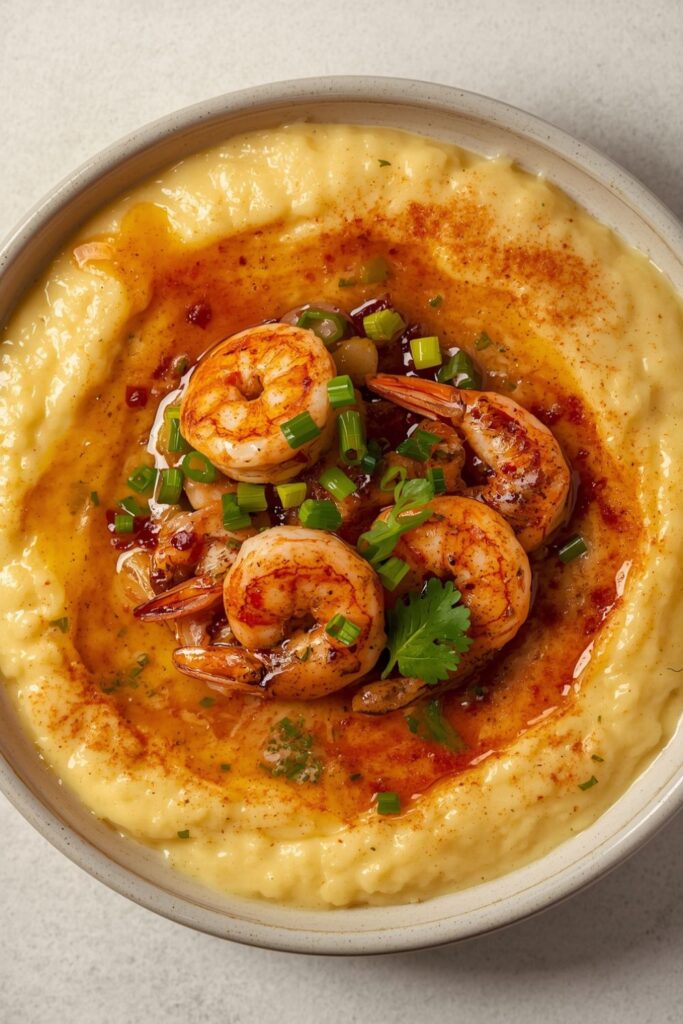
Real talk, most people ruin grits before starting. They grab instant stuff from cereal aisles. That’s not cooking, that’s assembling.
Great Cajun Shrimp and Grits starts with understanding foundations. Stone ground grits are your best friend here. They take longer, sure. But they reward patience with incredible texture.
The shrimp matter too. Fresh trumps frozen when possible. But if frozen works, thaw them properly. No shortcuts with warm water, makes them mushy.
This dish originated from humble beginnings. Lowcountry fishermen needed hearty breakfasts before heading out. Simple grits topped with whatever nets brought in.
The transformation happened when Louisiana’s bold spices traveled east. Cajun influence brought heat, depth, complexity. That fusion creates today’s Cajun Shrimp and Grits, honoring tradition while embracing fire.
Perfect Cajun Shrimp and Grits Ingredients & Smart Swaps
The Foundation Players
For the Grits:
- 1 cup stone ground white grits
- 4 cups whole milk
- 2 cups water
- 4 tablespoons butter
- 1/2 cup sharp cheddar cheese, grated
- Salt and white pepper to taste
For the Cajun Shrimp:
- 1 1/2 pounds large shrimp, peeled and deveined
- 2 tablespoons Cajun seasoning (homemade preferred)
- 3 tablespoons olive oil
- 4 strips thick cut bacon, chopped
- 1 medium onion, diced
- 1 bell pepper, diced
- 3 celery stalks, diced (the holy trinity!)
- 4 garlic cloves, minced
- 2 tablespoons flour
- 1 cup seafood or chicken stock
- 1/4 cup heavy cream
- 2 green onions, sliced
- Fresh parsley for garnish
- Lemon wedges for serving
Smart Swaps for Cajun Shrimp and Grits Success
Can’t find stone ground grits? Yellow polenta works beautifully. Texture’s almost identical, corn flavor shines through.
Lactose issues? Swap milk for unsweetened oat milk. Add extra butter for richness. Replace cheese with nutritional yeast, sounds weird, tastes amazing.
No seafood stock? Chicken stock works fine. Better yet, save shrimp shells. Simmer them fifteen minutes in water. Instant seafood stock costing nothing.
Fresh shrimp breaking the budget? Frozen’s fine with proper treatment. Thaw overnight in fridge. Pat completely dry before seasoning. They’ll behave like fresh with gentle handling.
Insider Secrets for Cajun Shrimp and Grits Ingredient Success
Buy shrimp with shells on when possible. Those shells add flavor to your stock. Plus, shell on shrimp stay juicier during cooking.
For grits, look for packages that feel heavy. Quality grits have weight and substance. Avoid anything that feels light or dusty.
The holy trinity, onion, bell pepper, celery, should be cut uniformly. Same size pieces cook evenly. No one wants crunchy celery next to mushy onion.
Step by Step Cajun Shrimp and Grits Magic
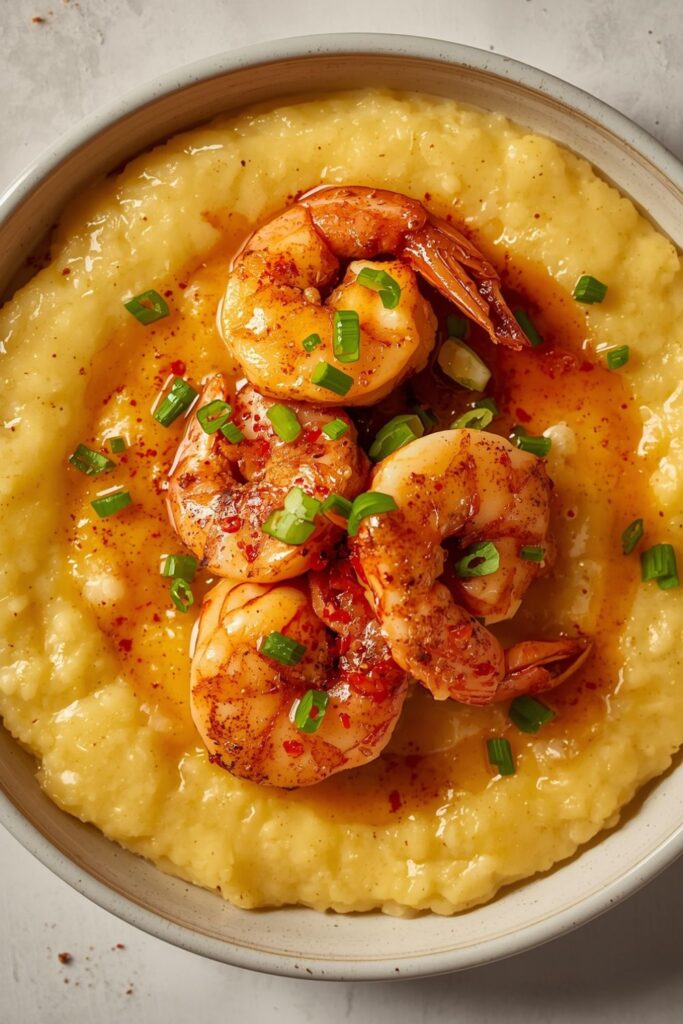
Step 1: Master the Grits Foundation
Start grits first, they’re this dish’s soul. Bring milk and water to gentle simmer. Not rolling boil, makes grits grainy and stubborn.
Slowly whisk in grits. And I mean slowly. Pouring too fast creates haunting lumps forever. Think gentle rain, not thunderstorm.
Once incorporated, reduce heat to low. These babies need forty five minutes gentle cooking. Stir every five ten minutes. They’ll thicken gradually, become silky smooth.
Here’s grandmother’s Charleston trick: add milk splashes if needed. They should flow like honey, support toppings perfectly.
Season with salt and pepper halfway through. Taste and adjust, every palate differs.
Step 2: Build Your Flavor Base
While grits bubble away, start shrimp preparation. Pat those beauties completely dry. Moisture enemies good searing.
Toss shrimp with half your seasoning. Let them sit while prepping vegetables. This gives flavors penetration time.
Cook bacon until crispy in large skillet. Don’t drain fat, that’s liquid gold. Remove bacon but leave grease behind.
Sear shrimp in bacon fat over medium high. Two minutes per side maximum. They finish cooking later. Perfect timing prevents rubbery texture.
Step 3: Create the Cajun Magic
In the same skillet, sauté your holy trinity. The vegetables should soften but keep some bite. About 5-6 minutes does it.
Add garlic for the last minute. Garlic burns fast and bitter. Nobody wants bitter garlic ruining their masterpiece.
Sprinkle in flour and cook for 2 minutes, stirring constantly. This creates your roux, the thickening base for your sauce.
Slowly add stock, whisking constantly. Start with a splash, whisk smooth, then gradually add more. This prevents lumps and creates silky texture.
Step 4: Bring It All Together
Add cream and remaining Cajun seasoning to your sauce. Taste and adjust, every palate’s different.
Return shrimp and bacon to the skillet. Simmer just until shrimp are heated through. About 2 minutes max.
Finish your grits with butter and cheese. Stir until melted and glossy. The grits should be loose enough to pour but thick enough to support the shrimp.
The Science Behind Perfect Results
Understanding technique doesn’t just make you a better cook, it makes you confident. Cooking isn’t magic; it’s chemistry you can taste.
Why grits turn creamy: Grits are ground corn packed with starch. When heated gently in liquid, those starch granules swell and release, creating that velvety, spoon coating texture. Rushing the process or boiling too hard makes them gritty instead of smooth. Slow heat plus patience equals silk on the spoon.
Why shrimp searing matters: Shrimp cook lightning fast. Hitting them with quick, high heat sparks the Maillard reaction, the browning that builds deep, savory complexity. It’s the difference between bland seafood and shrimp that sing with smoky, golden flavor. Overdo it, and they tighten into rubbery little “O’s.” Perfect searing gives you tender, juicy shrimp every time.
Why roux makes magic: That humble mix of flour and fat isn’t just for thickening, it’s flavor engineering. As it toasts, the flour develops nutty notes and builds a silky backbone for your sauce. Without it, your shrimp mixture would feel thin and flat. With it, you get body, depth, and luscious texture.
Pro Tool Tips:
- Heavy bottomed pots distribute heat evenly, protecting your grits from scorching.
- A sturdy whisk slices through starch, breaking up lumps before they form.
- Wide skillets give shrimp space to sear instead of steam, crowding kills flavor.
Cooking science might sound technical, but here it’s practical, it’s what transforms ordinary ingredients into something soulful and unforgettable.
Making It Beautiful & Delicious
Plating Like a Pro
Warm your bowls first, hot food deserves hot plates. A quick rinse with hot water does the trick.
Spoon grits into bowls, creating a slight well in the center. This holds your shrimp mixture perfectly.
Arrange shrimp artfully on top. Don’t just dump, place with intention. Five or six shrimp per serving looks abundant without being overwhelming.
Drizzle sauce around the edges and over the shrimp. That glossy sauce catches light beautifully and promises flavor in every bite.
Perfect Pairings
Wine that Works: A crisp Sauvignon Blanc cuts through richness beautifully. The acidity balances all that butter and cream.
For red wine lovers, try Côtes du Rhône. Light enough not to overpower, with enough body to stand up to Cajun spices.
Sides that Sing: Simple sautéed greens provide color and nutrition. Collards, kale, or spinach all work wonderfully.
Crusty French bread for sopping up sauce. Because letting that gorgeous sauce go to waste should be illegal.
A simple salad with vinaigrette cuts richness between bites. Arugula with lemon dressing is perfect.
Wrapping It Up: Your Cajun Shrimp and Grits Superpower
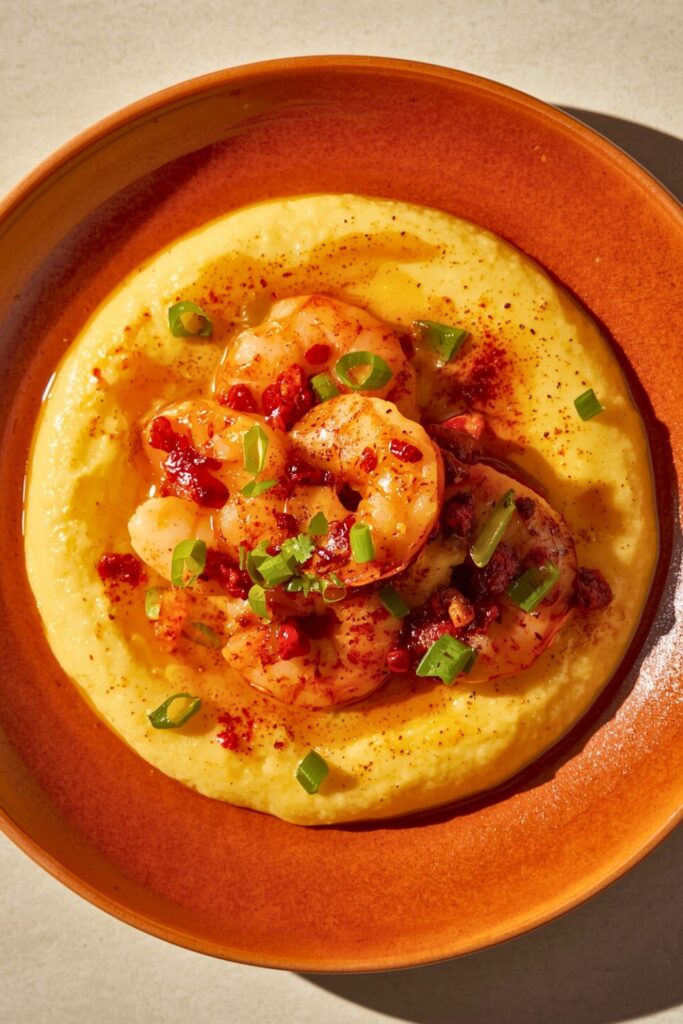
Mastering this Cajun Shrimp and Grits recipe gives more than great food. You’ve learned fundamental techniques applying everywhere. Making roux, cooking grits properly, building layered flavors.
This dish teaches patience too. Good grits can’t rush. Flavors need development time. These lessons make better cooks overall.
Beauty lies in flexibility here. Master basics, then make yours. Add andouille sausage for smokiness. Throw in okra for thickening. Extra vegetables for color and nutrition.
Remember, cooking nourishes people you love. Every time you make Cajun Shrimp and Grits, you share something special. Techniques might be yours. But love comes through every bite.
Keep practicing. Keep tasting. Keep adjusting. Soon, you’ll teach others these secrets. Pass along this delicious tradition.
Trust your instincts. Your palate knows preferences. These guidelines get you started. Your taste buds guide you home.
Frequently Asked Questions
Can I make grits ahead of time?
Absolutely, with proper reheating technique. Store cooked grits refrigerated up to three days.
When reheating, add milk gradually while stirring over low heat. Start with quarter cup, add more until reaching perfect consistency. The texture changes slightly but remains delicious.
What if my grits turn out lumpy?
Don’t panic, lumpy grits can be saved. Strain them through a fine mesh sieve, pressing the lumps through with a spoon.
For future prevention, remember the golden rule: add grits to liquid slowly while whisking constantly. Never dump them all at once.
If lumps form during cooking, a quick blitz with an immersion blender smooths things out beautifully.
How do I prevent rubbery shrimp?
Time and temperature control everything. Shrimp cook incredibly fast, usually two three minutes total.
Watch for color change from gray to pink. C shaped curl means perfect doneness. Tight O shapes mean overcooked. Since they finish in sauce, slightly undercook during searing.
Can I use instant grits in a pinch?
While stone ground grits are worth the wait, instant grits can work for weeknight dinners. Just adjust your expectations.
Cook instant grits with half milk, half water instead of all water. This adds richness that helps bridge the texture gap.
Add extra butter and cheese to compensate for the less complex corn flavor. A tablespoon of cream cheese works wonders too.
What’s the best way to reheat leftovers?
Separate components if possible. Grits and shrimp mixture reheat better apart.
Warm grits gently in a saucepan with a splash of milk, stirring frequently. Don’t rush with high heat, it makes them grainy.
Reheat shrimp mixture in a skillet over medium low heat. Add a tablespoon of stock if the sauce seems too thick.
The flavors actually improve overnight, so leftovers can taste even better than the original meal.

Swiftly Captions by Tina Smith — Quick, flavorful food recipes made simple, bringing fresh inspiration to your kitchen every day
